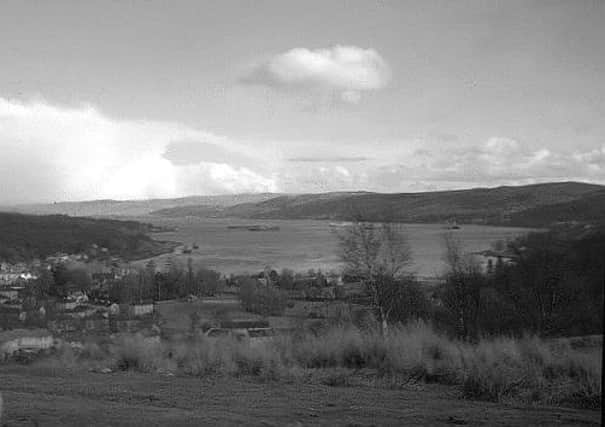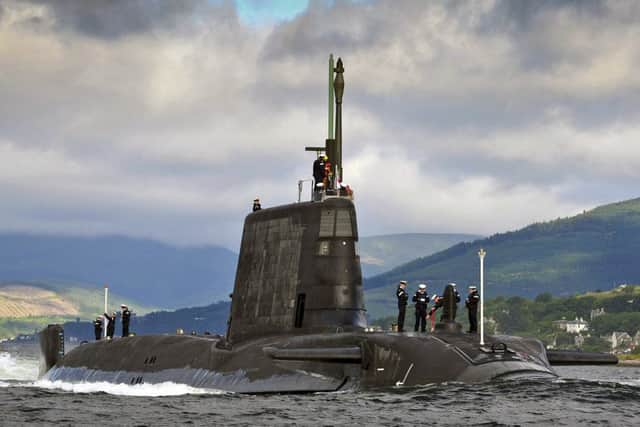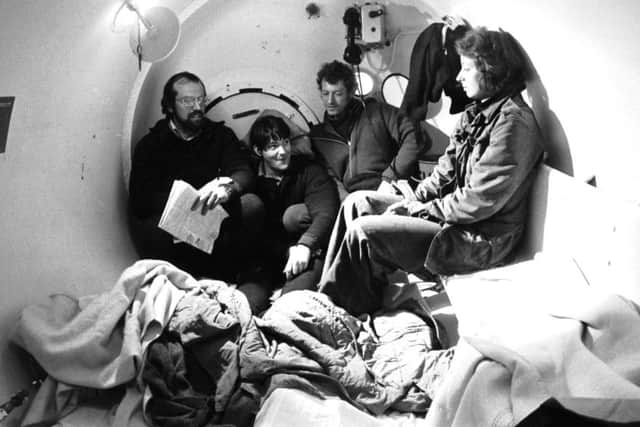Faslane naval base through the decades


Tucked away on the northern shore of the Gare Loch, HM Naval Base Clyde has hosted Scotland’s Royal Navy presence since the First World War. It is presently home to all four of the Vanguard-class submarines armed with controversial Trident nuclear missile systems, but its history stretches back to the time of the First World War.
After the sinking of the steam-propelled HMS K13 during sea trials in 1917 in the loch due to flooding of her engine room, Faslane developed and expanded as the twentieth century progressed. During the Second World War, Faslane saw its first service as a naval base, with the bay turned into a marshalling yard to serve the needs of the submarines and ships stationed there.
Advertisement
Hide AdAt the end of the conflict, the region was used to dismantle ships including HMS Vanguard in 1962 - the last battleship to ever be scrapped in Britain and only a short journey away from her Clydebank birthplace. The onset of the Cold War saw increased development after the Polaris Sales Agreement was enacted with the United States. This deal permitted Royal Navy submarines to carry deadly UGM-27 Polaris nuclear missiles adapted for the Royal Navy until their withdrawal from service in the 1990s.


What is now Royal Navy Armaments Depot Coulport, a facility for the maintenance and loading of nuclear warheads, used to be a coastal retreat for Glaswegians before the 1960s. A floating dry dock for the handling of nuclear submarines, known as an explosive handling jetty, is a prominent feature of Coalport along with its reinforced concrete walls built into the hillside.
Four Polaris-class submarines were based in Scotland; namely HMS Repulse, Renown, Resolution and Revenge, which were retired in line with the demise of the Polaris system.
In recent times, Faslane has seen hundreds of protests over its status as the home of the Trident missile system, which replaces the Polaris scheme. One of the more recent demonstrations resulted in the arrest of dozens of activists and coincided with the run up to the UK’s general election in May earlier this year.
The home of HMS Vanguard - named in honour of the battleship broken up there more than half a century ago - has been backed by Labour and the Conservatives, though both the SNP and the Scottish Green Party have advocated disposal of the nuclear elements of the base to varying degrees. Despite cries to the contrary, HMS Vengeance, Victorious and Vigilant are still assigned to the base along with HMS Vanguard and constitute the current UK’s flotilla of hunter-killer submarines.


Investment and upkeep of Faslane, or HM Naval Base Clyde as it was renamed by the start of the century, looks set to continue as the Royal Navy’s Astute-class submarines will use the base once all seven have been constructed.